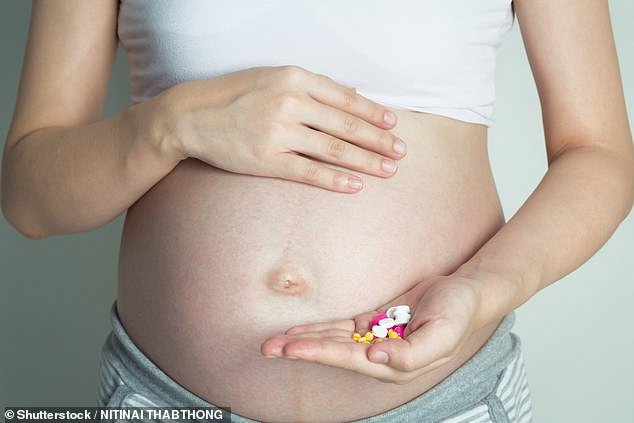- Prozac, also known as fluoxetine, increases serotonin levels which improves mood
- But the medicine can pass to the baby in the womb or into the breast milk of new mothers.
Using antidepressants during pregnancy or breastfeeding can damage a baby’s brain and increase their risk of mental health problems later in life, according to a study.
Prozac, also known as fluoxetine, increases levels of serotonin in the brain that improves mood, but scientists found that this can affect a child’s developing prefrontal cortex.
They also discovered that the drug can pass into the breast milk of new mothers who take it and end up feeding to newborns.
Research suggests that between 300,000 and 400,000 children are exposed to selective serotonin reuptake inhibitor (SSRI) medications each year in the US during pregnancy.
Professor Won Chan Oh, from the University of Colorado, said: “We are the first to provide experimental evidence of the direct impact of serotonin on the developing prefrontal cortex when fluoxetine is taken during pregnancy.”
Research suggests that using antidepressants during pregnancy or breastfeeding can damage the baby’s brain (file image)
“While serotonin is known to play a role in brain development, the mechanisms responsible for this influence, specifically in the prefrontal cortex, are unclear.
“Understanding this has the potential to help with early intervention and the development of new therapies.”
The researchers said doctors should consider non-pharmaceutical treatments for pregnant women and those suffering from postpartum depression.
Serotonin is involved in overall brain function, but it also influences how connections between neurons change and adapt, contributing to the brain’s ability to learn and adapt.
The prefrontal cortex is the most evolved region of the brain and plays a central role in several high-level functions, including planning, decision making, problem solving, and personality expression.
The new study, published in Nature Communications, looked at the impact of serotonin deficiency and excess on brain development in mice.
Researchers now plan to examine the impact of Prozac on a developing adolescent brain.
Prozac is one of the most prescribed antidepressants in the world. It is available on the NHS and is frequently used because it has fewer side effects than other medicines.
Antidepressants are on the rise in the UK: 86 million were prescribed in 2022/23 to some 8.6 million patients, 200,000 more than the previous year.
Earlier this week, an independent study found that exercise and yoga can be as effective as pills in relieving depression.

